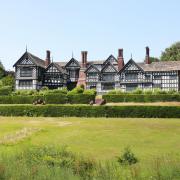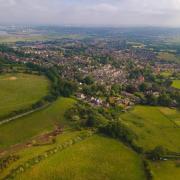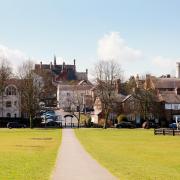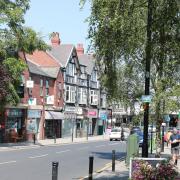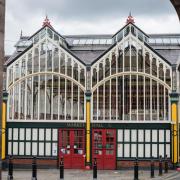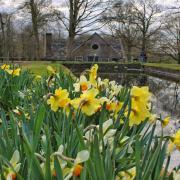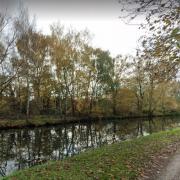With the trees bursting forth in new colours, autumn is a beautiful time of year to take a stroll in the woods. Cheshire Wildlife Trust’s Katie Piercy tells us why to get out this November and where to go.

The French philosopher Albert Camus once said: ‘Autumn is a second spring, where every leaf is a flower’, and I couldn’t agree more. While spring brings us crocuses and snowdrops, and summer gives hedgerows bustling with crane’s bills and oxeye daisies, autumn offers a blazing canvas of red, yellow and purple spread right above our heads. But what makes this season so spectacular?
There are three types of chemicals at work in our brightly coloured leaves; chlorophyll, carotenoids and anthocyanins. Chlorophyll is our key player in photosynthesis and what make our leaves appear green. Carotenoids work as a kind of sideline factory, doing little of the work themselves but passing helpful pieces on to where they can be processed. These have a yellow or orange appearance and are present in the leaves throughout the growing seasons, though often masked by the green of the chlorophyll. And anthocyanins sit within the sap of the tree, with varying levels of acidity leading to their colour being anything from bright red to dark purple. These are rarely present during the growing season.
During the summer chlorophyll and carotenoids are busily working away, harvesting light to produce sugars, which help our trees to grow. Chlorophyll degrades easily and must constantly be rebuilt. Photosynthesis requires sunlight and warm temperatures, therefore in autumn when both begin to fall, the chlorophyll production rates reduce. In time the tree cuts off the supply of nutrients to the leaves, meaning the degrading chlorophyll is no longer replaced. This results in the green colour being lost and the yellows and oranges of the carotenoids, which are far sturdier than their partner, taking centre stage.

In some trees, sugar levels can begin to rise in the leaves as the process of transporting these into the stem and roots of the plant is no longer functioning. This causes the chemical reaction which creates anthocyanins, bringing about the bright red and purple colours within the leaves. This reaction also requires sunlight, meaning a shaded portion of the leaf may not receive the red colouration.
Varying proportions of the different chemicals result in the array of colours in our leaves, however other factors can affect autumn as a whole. As sunlight destroys the chlorophyll and encourages the production of anthocyanins, sunny days can help create vivid colours. Low winds, cool but not freezing temperatures, and dry weather can all also help autumn to last longer and blaze brighter.
For some countries, where winters are milder or don’t exist at all, autumn never comes. In New Zealand, for example, native deciduous trees keep their green leaves all through the year, while the rainforest giants of South America are continuously dropping their foliage without ever losing their whole canopy. In the UK today we also house a large number of non-native deciduous trees and conifers which often pay no heed to autumn. So which trees are worth looking out for at this time of year, and where can we find the brightest colours?

1) Beech
Beech forests have to be some of the most spectacular to step into in autumn. With a canopy of orange above and a vast array of beech masts to crunch beneath your feet, there is a gentle pleasure in walking among these giants. Often used as ornamental trees to line estate tracks and roads you’ll now find rows of large trees looking strangely lost in the middle of the countryside. Etherow Country Park in Stockport or Delamere Forest, near Northwich, are good spots to enjoy large beech specimens this autumn.
2) Oak
An English staple, no word can be said on native British trees without bringing up the oak. A gentle bloomer in autumn, it has its own majesty in the golden hues of its crown, and of course the added attractive crop of acorns. Even once the leaves begin to fall the oak makes an attractive figure, with its gnarly bark and large twisted branches reaching towards the sky. Cheshire Wildlife Trust’s nature reserve The Quinta, in Congleton, is a fantastic place to visit for autumn colours, not only for the oak and ash trees within the reserve itself but also for the beautiful views across the surrounding landscape. Look out for the different species within the hedgerows, bringing streaks of colour to the winter fields across the Danes Valley.
3) Silver birch
At any time of year the silver birch is an attractive tree, its ghostly white bark stripped with dark vertical lines makes it stunning even without its leaves. But autumn adds to its glory, with its almost triangular yellow leaves fluttering gently in the breeze and littering the ground like confetti.
4) Wild cherry
Hard to miss in the spring when its beautiful blossoms herald the coming of warmer days, the wild cherry is often forgotten about come autumn. But not only does this tree provide a tasty bounty for the birds, it also shines out against the blue canvas of the autumn sky in fiery orange tones. Often dotted along the edges of roads, or in the margins of fields this wonderful tree is worth stopping to admire wherever you may find it.
5) Sweet chestnut
Though it was brought to the UK by the Romans, the sweet chestnut has earned its title of honorary native, along with other ancient introductions such as the European rabbit. The large saw-edged leaf is hard to confuse with anything else and in autumn the intensely spiky cases of the sweet chestnuts themselves are an extra giveaway. Turning beautifully golden these trees are attention grabbing whether standing alone in a field or growing in the middle of a woodland. Older trees have deep crevices in their bark which often curl around the tree as if the whole of the trunk has been twisted. Visit Delamere Forest for some amazing specimens.




